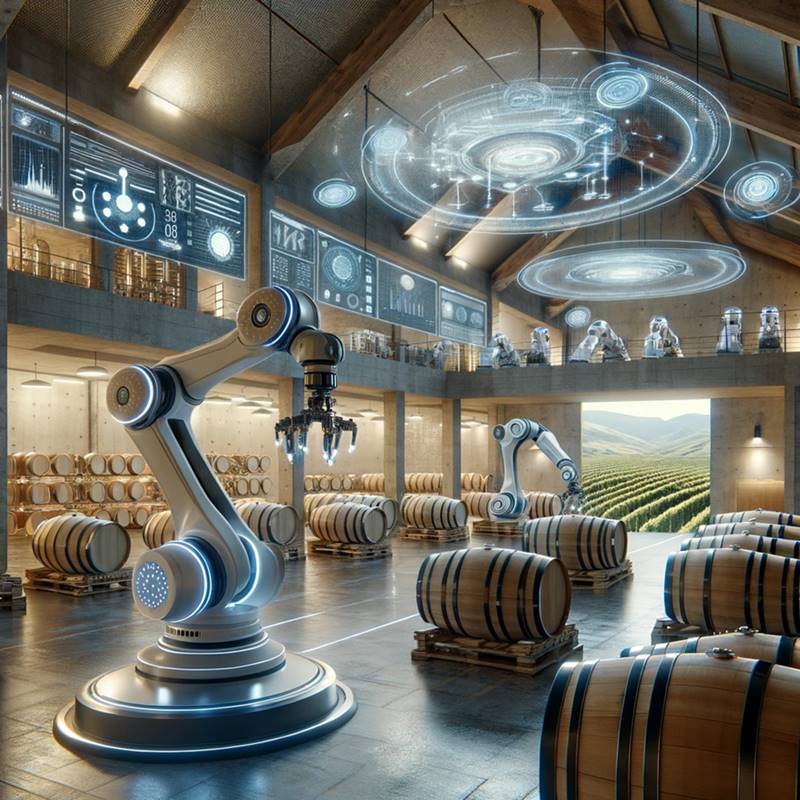AI Revolutionizes Wine Industry: From Vine to Glass
AI Boosts Sustainability and Efficiency in Wine Production
2024-05-30

The wine industry, long viewed as a bastion of tradition and craftsmanship, is undergoing a transformation driven by artificial intelligence (AI). Wineries are embracing advanced technologies to optimize every stage of the production process, from vineyard to bottle, significantly impacting the wines that consumers enjoy.
AI is being used to guide decision-making, improve budget management, and mitigate the effects of climate change. This results in products that are more accessible, sustainable, and of higher quality.
In Napa Valley, California, Gamble Family Vineyards has incorporated AI-powered tractors equipped with 360-degree cameras and sensors to analyze the crops daily. This information allows for real-time adjustments and long-term yield estimations.
In Australia, the Mount Langi Ghiran vineyard, part of the Rathbone Group, has implemented AI-based solutions to monitor water levels and forecast harvests. This technology enables precise planning for equipment and transportation use.
In Chile, Viña Concha y Toro, Latin America's largest wine producer, uses AI tools to estimate yields more accurately and gather detailed information about their grapes. This technology helps reduce the impact of climate change by predicting grape volumes for each season, considering variables such as weather, humidity, radiation, and wind.
One of the biggest challenges in viticulture is predicting yields in advance. Viña Concha y Toro has employed AI to forecast the amount of grapes they will have in a specific season. Damien Sheehan, General Manager and viticulturist at Mount Langi Ghiran, emphasizes the importance of precise forecasting not only for knowing how much wine will be produced but also for managing resources, reducing waste, and making responsible purchases without last-minute rushes.
AI tools also enhance the management of natural resources. In terms of irrigation, AI can schedule the timing and amount of water needed, making irrigation more efficient and avoiding overuse. Additionally, AI can diagnose fungal diseases through cameras mounted on tractors, allowing for better-timed crop protection responses.
The quality of grapes is crucial for producing good wine. Wineries are using AI-based platforms to gather information on tannin and antioxidant levels in the grapes. For example, a grape extract can be analyzed by AI to determine its quality and assign it to different production lines, from premium to ultra-premium.
In bottling plants, AI models help predict failures before they occur, allowing for more efficient maintenance. Instead of halting the entire production for comprehensive maintenance, they can now focus on specific parts, mitigating productivity loss.
While technology is transforming viticulture, it won't replace the human touch. Today's viticulturists are more tech-savvy than previous generations, but decision-making still requires knowledge, data, intuition, and experience. AI provides tools that make life easier for winemakers, allowing them to focus on their core work: tasting, smelling, and blending wines to create high-quality products.
The adoption of AI in the wine industry is redefining vineyard production and management. This technological integration enhances efficiency, sustainability, and the quality of wine, while winemakers remain essential to the art of winemaking.
Founded in 2007, Vinetur® is a registered trademark of VGSC S.L. with a long history in the wine industry.
VGSC, S.L. with VAT number B70255591 is a spanish company legally registered in the Commercial Register of the city of Santiago de Compostela, with registration number: Bulletin 181, Reference 356049 in Volume 13, Page 107, Section 6, Sheet 45028, Entry 2.
Email: [email protected]
Headquarters and offices located in Vilagarcia de Arousa, Spain.